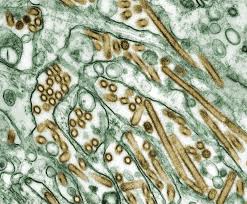Classification and survey of microorganisms
In the vast tapestry of life on Earth, the microscopic world teems with an incredible diversity of organisms, collectively known as microorganisms. These tiny entities play crucial roles in various ecosystems, influencing the balance of life on our planet. In this blog, we will embark on a journey into the intricate world of microorganisms, delving into their classification and conducting a survey to unravel their importance and impact.
I. Understanding Microorganisms:
Microorganisms, often referred to as microbes, encompass a myriad of life forms that are too small to be seen with the naked eye. This fascinating realm includes bacteria, viruses, fungi, archaea, and protists. Despite their diminutive size, these organisms wield immense power, shaping the environment, influencing human health, and participating in fundamental ecological processes.

II. Classification of Microorganisms:
A. Bacteria:
- Prokaryotic organisms lacking a nucleus.
- Classified based on shape (cocci, bacilli, spirilla) and staining properties (Gram-positive, Gram-negative).
- Ubiquitous in nature, bacteria inhabit diverse environments from deep-sea hydrothermal vents to the human digestive system.
B. Archaea:
- Prokaryotic organisms distinct from bacteria.
- Often found in extreme environments, such as hot springs, acidic lakes, and deep-sea hydrothermal vents.
- Play crucial roles in biogeochemical cycles.
C. Fungi:
- Eukaryotic organisms with a nucleus enclosed in membranes.
- Include yeasts, molds, and mushrooms.
- Vital for decomposition, nutrient cycling, and symbiotic relationships with plants.
D. Protists:
- Eukaryotic organisms encompassing a wide range of diversity.
- Single-celled or multicellular.
- Found in aquatic environments and soil; some are responsible for diseases like malaria.
E. Viruses:
- Acellular entities consisting of genetic material (DNA or RNA) surrounded by a protein coat.
- Obligate intracellular parasites, requiring a host for reproduction.
- Not classified in traditional taxonomic categories; their classification is based on the type of genetic material and replication strategy.
III. Survey of Microorganisms:
A. Environmental Importance:
- Decomposition: Microbes break down organic matter, recycling nutrients in ecosystems.
- Nitrogen Fixation: Certain bacteria convert atmospheric nitrogen into forms usable by plants.
- Bioremediation: Microorganisms aid in the cleanup of pollutants and contaminants.
B. Medical Relevance:
- Disease-causing Microbes: Bacteria, viruses, and fungi are responsible for various infections.
- Antibiotics: Derived from bacteria and fungi, these compounds combat bacterial infections.
- Probiotics: Beneficial bacteria supporting gut health.
C. Industrial Applications:
- Fermentation: Microbes contribute to the production of various foods and beverages.
- Biotechnology: Microorganisms are used in genetic engineering and the production of pharmaceuticals.
- Bioenergy: Certain microbes participate in the production of biofuels.
The microscopic world of microorganisms, often overlooked by the naked eye, harbors a wealth of life forms crucial to the balance of ecosystems and the well-being of larger organisms. By understanding their classification and appreciating their diverse roles, we gain insights into the intricate dance of life at the microscopic level. As technology advances, further discoveries in this realm promise to reshape our understanding of life on Earth.
-Thank you